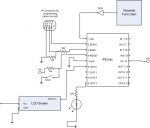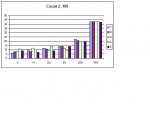Greetings,
I want to add an ability to measure wind speed using the 18x and have searched the site for others who have worked on this. Found several threads but what I am looking for is a simple (if it can be made simple) short block of code using PULSIN to measure frequency. I have tried several things measuring my oscillator output but get nothing when I try to read the value from PULSIN.
Any short code out there?
I want to add an ability to measure wind speed using the 18x and have searched the site for others who have worked on this. Found several threads but what I am looking for is a simple (if it can be made simple) short block of code using PULSIN to measure frequency. I have tried several things measuring my oscillator output but get nothing when I try to read the value from PULSIN.
Any short code out there?


